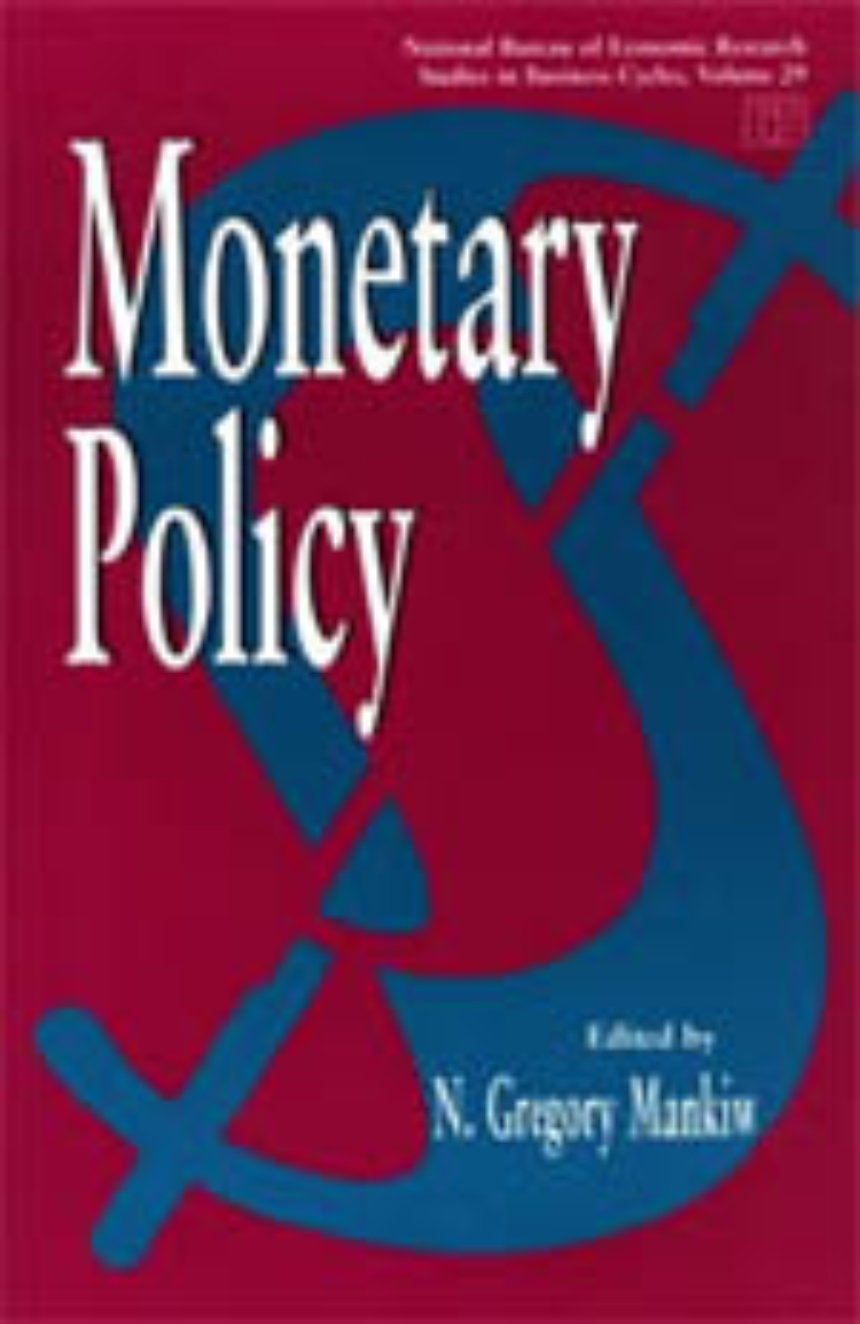Monetary Policy
In Monetary Policy, leading monetary economists discuss applied aspects of monetary policy and offer practical new research on the timing, magnitude, and channels of central banking actions.
Some of the papers in this volume evaluate a variety of policy rules based on monetary aggregates, nominal income, commodity prices, and other economic variables. Others analyze price behavior and inflation, particularly the short-run behavior of prices. Still others examine the monetary transmission mechanism—the channel through which the central bank’s actions affect spending on goods and services—with a special focus on the reduction in bank lending that must accompany a reduction in reserves.
This new research will be of special interest to central bankers and academic economists.
Some of the papers in this volume evaluate a variety of policy rules based on monetary aggregates, nominal income, commodity prices, and other economic variables. Others analyze price behavior and inflation, particularly the short-run behavior of prices. Still others examine the monetary transmission mechanism—the channel through which the central bank’s actions affect spending on goods and services—with a special focus on the reduction in bank lending that must accompany a reduction in reserves.
This new research will be of special interest to central bankers and academic economists.
356 pages | 44 line drawings, 60 tables | 6 x 9 | © 1994
National Bureau of Economic Research Studies in Business Cycles
Economics and Business: Economics--Money and Banking
Table of Contents
Acknowledgments
Introduction by N. Gregory Mankiw
1: The Use of a Monetary Aggregate to Target Nominal GDP
Martin Feldstein, James H. Stock.
2: Nominal Income Targeting
Robert E. Hall, N. Gregory Mankiw.
3: Nonstandard Indicators for Monetary Policy: Can Their Usefulness Be Judged from Forecasting Regressions?
Michael Woodford
4: On Sticky Prices: Academic Theories Meet the Real World
Alan S. Blinder
5: What Determines the Sacrifice Ratio?
Laurence Ball
6: Measuring Core Inflation
Michael F. Bryan, Stephen G. Cecchetti.
7: Monetary Policy and Bank Lending
Anil K. Kashyap, Jeremy C. Stein.
8: Historical Perspectives on the Monetary Transmission Mechanism
Jeffrey A. Miron, Christina D. Romer, David N. Weil.
9: Federal Reserve Policy: Cause and Effect
Matthew D. Shapiro
Contributors
Author Index
Subject Index
Introduction by N. Gregory Mankiw
1: The Use of a Monetary Aggregate to Target Nominal GDP
Martin Feldstein, James H. Stock.
2: Nominal Income Targeting
Robert E. Hall, N. Gregory Mankiw.
3: Nonstandard Indicators for Monetary Policy: Can Their Usefulness Be Judged from Forecasting Regressions?
Michael Woodford
4: On Sticky Prices: Academic Theories Meet the Real World
Alan S. Blinder
5: What Determines the Sacrifice Ratio?
Laurence Ball
6: Measuring Core Inflation
Michael F. Bryan, Stephen G. Cecchetti.
7: Monetary Policy and Bank Lending
Anil K. Kashyap, Jeremy C. Stein.
8: Historical Perspectives on the Monetary Transmission Mechanism
Jeffrey A. Miron, Christina D. Romer, David N. Weil.
9: Federal Reserve Policy: Cause and Effect
Matthew D. Shapiro
Contributors
Author Index
Subject Index
